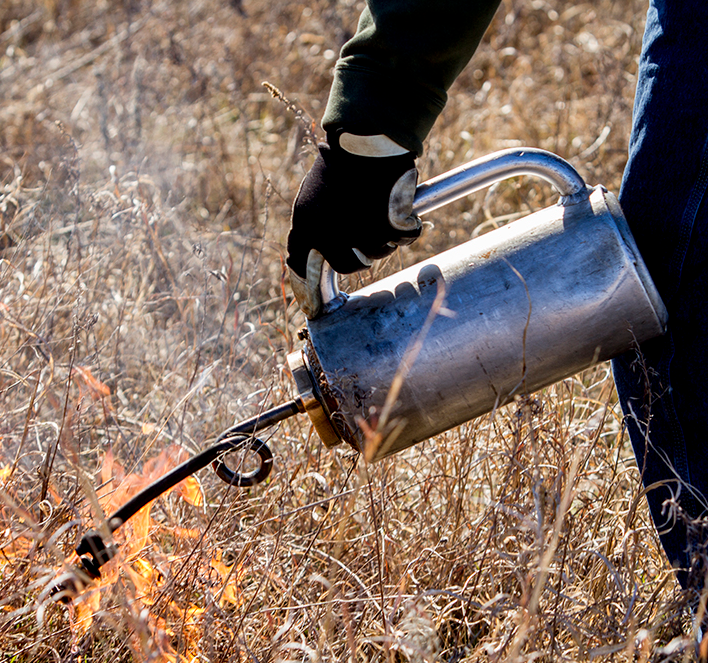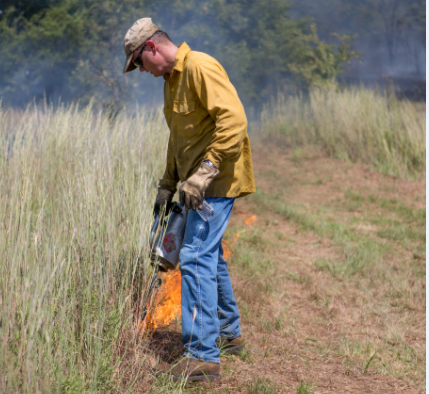Several things must exist for a person to consistently conduct safe and effective prescribed fires or controlled burns. These include appropriate education, experience, goals or objectives, adequate burn plan, site preparation, proper weather, labor, equipment, ignition sequence, smoke management, and mop-up. When a person conducts a burn, they should appropriately address all of these issues. At first glance, this may seem a little overwhelming, but with some training and experience, most folks can easily develop the skills to burn safely and effectively.
Education
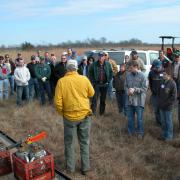
Each potential fire manager should obtain adequate education by reading publications and participating in courses, seminars, workshops, and or field days addressing fire management. Information should address safety, smoke management, fire prescription preparation, fire behavior, fuel issues, plant responses to fire, animal responses to fire, ignition procedures, laws, sociopolitical issues, and others. Although a few days of thorough, well-organized educational effort and adequate experience might be enough for a person to start burning, fire education should be viewed as a lifelong process because there is much to learn and the science continues to grow.
Experience

Each potential fire manager should obtain adequate experience by assisting on burns with skilled fire manager(s) burn before conducting their own burns. Burning is similar to driving a car where we learn much by reading and participating in educational courses, but we do not become safe, skilled drivers until we operate vehicles for a while. We learn how hard to push an accelerator or brake, and how much to turn a steering wheel primarily from experience rather than from reading or courses. Similarly, we learn how to set fire and how to interpret and react to fire behaviors primarily from experience rather than just academic knowledge. Most people continue to learn from experience even after hundreds of fires.
Goals
Goals and or objectives should be established for each burn. These goals can be specific for livestock, wildlife or forestry objectives or a combination of all. The goals or objectives then guide fire prescription preparation, site preparation, suitable weather conditions, labor and equipment needs, etc. Goals or objectives help us aim at a target so we can consistently hit it or get close to it.
Plan
Much of the work involved with conducting a safe, effective burn occurs in the planning stages. A burn typically should be planned months, sometimes more than a year, in advance to provide adequate time for written prescribed fire plan preparation, fine fuel accumulation through rest, firebreak preparation, coarse and volatile fuels management near firebreaks, labor and equipment arrangements and preparation, and neighbor and civil authority notifications. A written prescribed plan is one of the things that separates a prescribed fire from a well-intentioned, but sometimes poorly planned, controlled burn.
Site preparation
Site preparation involves delineating and preparing firebreaks, moving coarse and volatile fuels away from firebreaks (or alternatively, moving firebreak locations or adjusting firebreak widths to address coarse and volatile fuels), accumulating adequate fine fuels, and sometimes modifying fuels mechanically. Most physical labor and or heavy equipment activity that might be necessary for a burn typically are involved in site preparation. Areas grazed by livestock may require deferment via closed gates or a patch burn grazing approach to accumulate adequate fine fuels.
Weather
The burn prescription developed during planning establishes acceptable wind directions, wind speeds, relative humidity, smoke management guidelines, and air temperatures to accomplish goals or objectives with the available fuels, firebreaks, labor and equipment. A burn manager should closely monitor weather forecasts to determine when weather conditions are suitable for a burn. When weather parameters are outside prescription, a burn is a ‘no go.’ Without a high level of skill and site preparation, most burns should not be conducted when wind changes directions, wind speeds are above 20 mile per hour, or relative humidity is below 20 percent.
Labor
The minimum amount of labor needed for a burn depends upon area size, site preparation, crew skill level, and the written prescription. With adequate skill and site preparation, some burns can be safely and effectively conducted with only two to three people, whereas other burns may require crews of seven or more. However, one person is not an adequate burn crew because no contingency exists when a single person gets sick, gets injured, or must leave the site.
Equipment
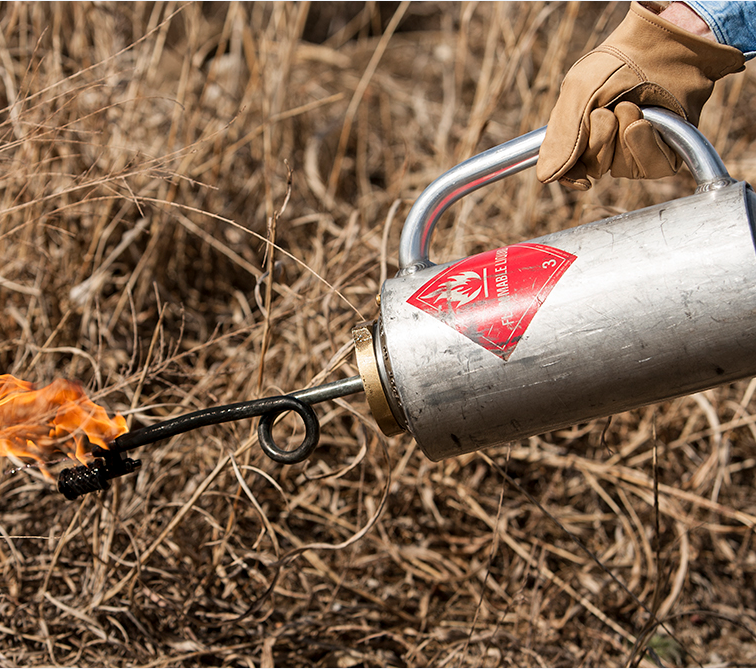
Minimum types of equipment needed for every burn include ignition, fire suppression, communication, and personal apparel. Ignition equipment usually includes matches and one or more drip torches; fire suppression equipment usually includes one or more water sprayers or pumpers, but also frequently includes other equipment such as leaf blowers, rakes, swatters, backpack sprayers, and or shovels; communication equipment usually includes at least one mobile telephone, but frequently includes other mobile telephones and or two-way radios; and personal apparel includes fire-resistant pants, shirts and or jackets, boots, gloves and hats. Other equipment can be helpful or needed, such as drinking water dispensers, fuel containers, chainsaws, fence pliers, water hoses, axes, and weather meters.
Ignition sequence
Each burn should be ignited in a certain sequence to prevent fire escape and minimize smoke problems. Many firebreaks are not wide enough to stop a headfire. Usually, backfire, flank fire, and strip headfire are lit along firebreaks to create blackened areas that effectively widen firebreaks. Most time spent burning is allocated to burning areas along firebreaks to prevent fire escape. Generally, relatively little time is spent igniting the headfire. Headfires are not used in some burns due to escape and smoke considerations.
Smoke management
Smoke management should receive significant consideration in the written prescription. More problems are caused by smoke than from the flames. Smoke can move and cause impacts many miles away from a burn. Smoke should be kept away from highways, airports, schools, nursing homes, towns, and residential areas. Fire crews should always monitor smoke because it can indicate when a fire is burning in an inappropriate location or manner.
Mop-up
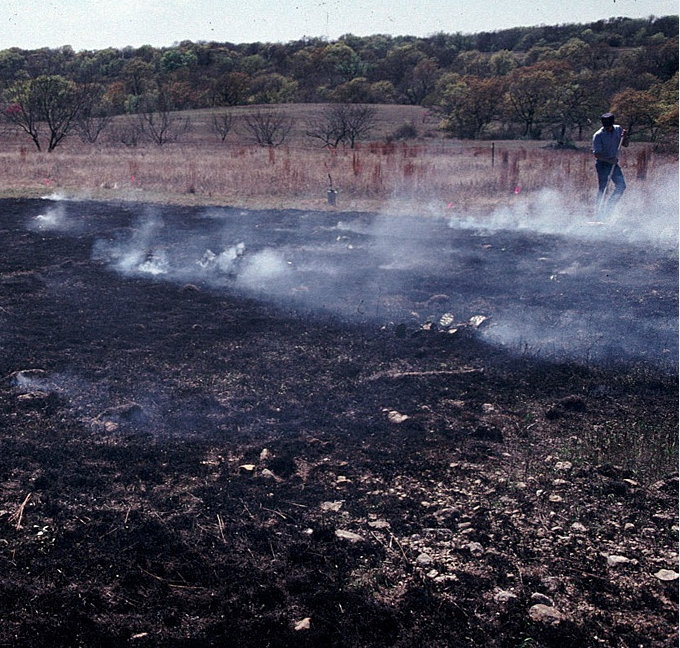
A fire manager and crew should remain with a burn until all fire is safely contained within the perimeter. Burning and smoking items near firebreaks should be completely burned, moved away from firebreaks, or extinguished before the crew leaves. After the crew is allowed to leave, a fire manager should continue to monitor a burned site every day until all smoking debris is extinguished, which may be a week or more in timbered areas or areas with wood/brush piles.

